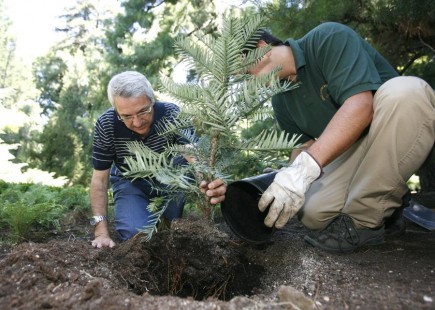What trees do cities need and where?
Trees shelter biodiversity, alleviate heat, purify the air in cities and make them more pleasant and liveable... But should any tree be planted anywhere? Extreme events such as the Filomena storm have shown that they should not.
In the capital alone, last January's storm devastated 700,000 trees, according to initial estimates, revealing that some of them were not planted in the right place, explains Marino Sánchez, head of trees at the Royal Botanical Garden (RJB in Spanish) of the CSIC.
A good part of the trees that have perished in Madrid are pines, cedars or encymas planted in meadows, a "wrong" place according to this expert because the water and the mulch of the grass that covers them generates "lazy" trees that, as they get their resources in an easy way, do not go deep down into the ground and put down superficial roots.
"If you give a root what it needs, why would it go 40 centimetres down? Of course, when two hundred kilos of snow fall on it, the tree tips over, because it is not well supported", adds this expert, president of the Spanish Association of Arboriculture.
Lessons for planting after Filomena
Another lesson to be learned: do not plant species that require direct sun for their development, such as heliophilous trees (privet, for example) - in narrow streets where there is shade almost all day long.
"When these trees don't get the light they need, they look for it, and instead of growing thicker, they grow vertically, i.e. they don't spend energy on making the branch fat and strong, but on growing upwards to look for light," he adds.
When the snow fell on them, the branches that were weakened by lack of thickness bent until they broke, "that's why you should never plant this type of tree in narrow streets".
The success of having healthy and resilient trees in cities lies in placing the right species in the right place, in prioritising the quality of future trees over quantity, in giving each specimen its own space so that it can expand and open up good canopies, without "invading" its neighbours or nearby buildings, Sánchez sums up.
Another fundamental key is diversity: the same type of tree should not be present in a city in a proportion of more than 7-10% because, among other things, it would lead to a potential pest affecting it that would be devastating, or because it would increase the risk of allergies - as is the case in Madrid with the shade plane tree, which accounts for approximately 17% of the tree stock.
Which trees will withstand climate change?
In addition, climate change raises another fundamental question before planting: Will this tree withstand the climate of the year 2100?
To address this question, cities need to create urban zoning by temperature and humidity, see what is expected to evolve in a context of climate change and choose the species that will best withstand these zones.
"In Madrid, we already see that species that were once very common in the city, such as the horse chestnut or the lime tree, can no longer withstand the increasingly high temperatures, unless you plant them in very special conditions, surrounded by other trees that provide shade," he says.
To guarantee biological diversity and adaptation to climate change, Sánchez considers it "essential" that cities combine the planting of native and non-native species that do not present risks of being invasive or hybridisable, and that species native to lower latitudes, such as Andalusia, are planted at higher latitudes.
"All autochthonous species have been allochthonous at some time, orange trees were brought to the peninsula by the Arabs", recalls Sánchez, who, from the Master's Degree in Arboriculture and Urban Forest Management http://masterarboriculturaurbana.com/
at the Complutense University of Madrid instils in his students a more respectful approach to trees, focusing on the benefits they bring to the city and its inhabitants. EFE
Original article EFE Verde.
Translated with www.DeepL.com/Translator
